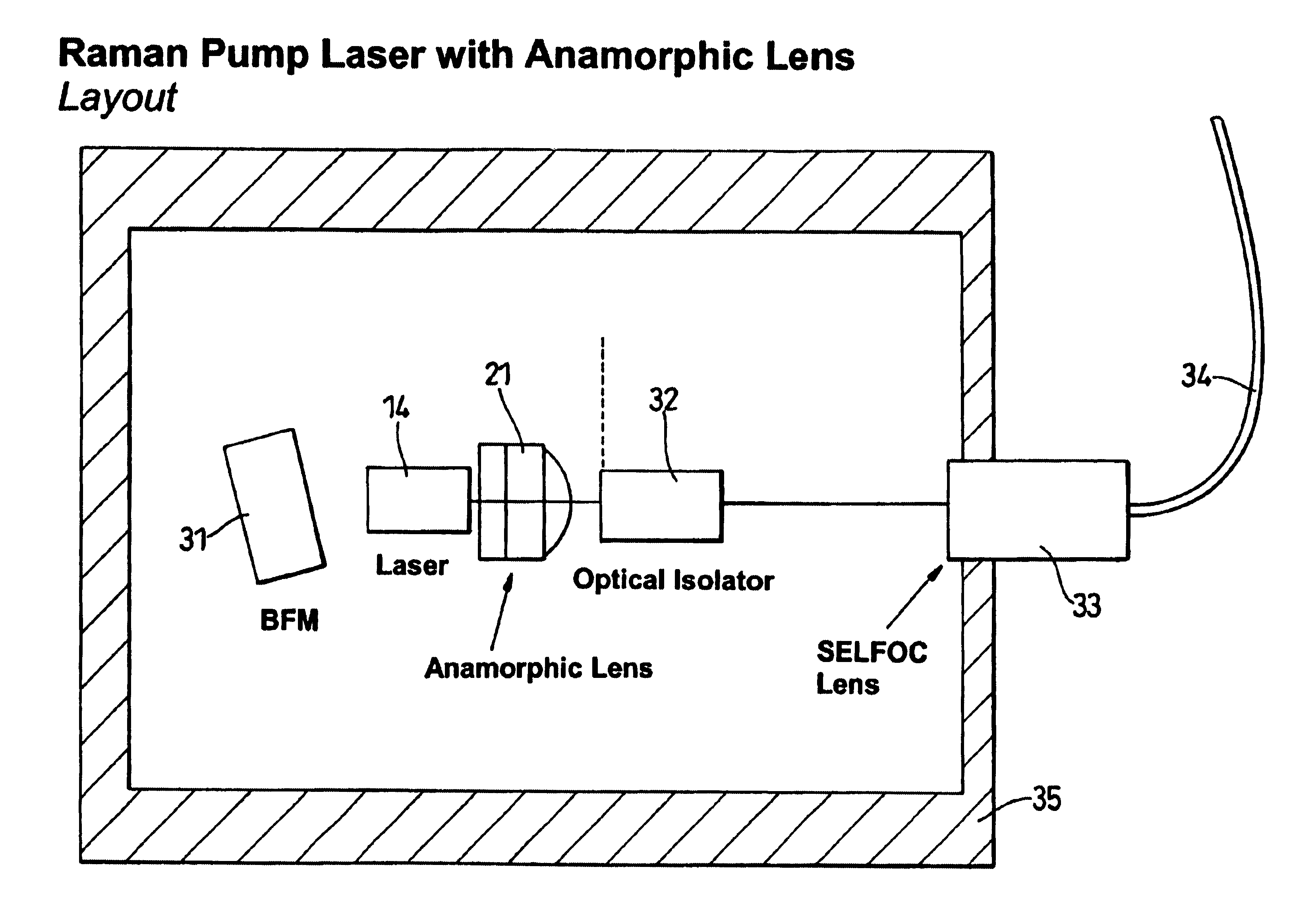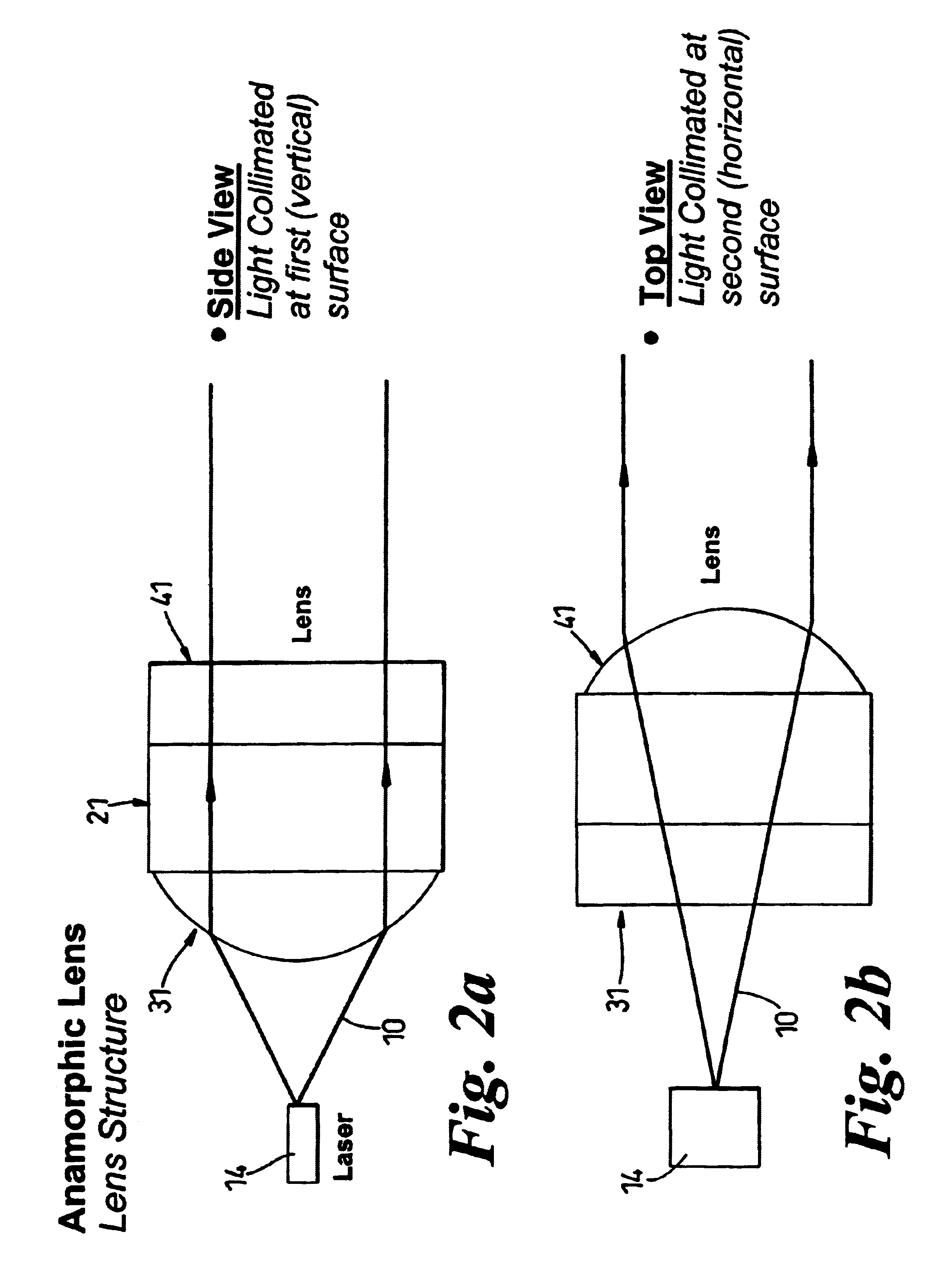Optical transmitter and anamorphic lens therefor
an optical transmitter and anamorphic technology, applied in the field of optical transmitters and anamorphic lenses therefor, can solve the problems of hence the effective device output power, reducing the overall device output power and efficiency of the overall device, and reducing the coupling efficiency, so as to minimise wave front distortion, optimise lens design, and efficient coupling of laser radiation
- Summary
- Abstract
- Description
- Claims
- Application Information
AI Technical Summary
Benefits of technology
Problems solved by technology
Method used
Image
Examples
Embodiment Construction
FIGS. 1a to 1c have been discussed above and are included for comparative and explanatory purposes.
Referring now to FIGS. 2a and 2b, these figures together show the construction of the anamorphic lens. The general form of the lens 21 is that of two crossed, non-circular, cylindrical surfaces 31, 41 (referred to as the x and y surfaces). The diagram above shows a side view and a top view. The side view of FIG. 2a illustrates the collimation in the vertical plane of the elliptical beam 10, output from the laser 14 by the first cylindrical surface 31 (the x surface). The second surface 41 (the y surface) is oriented at 90 degrees to the x surface and provides collimation in the horizontal plane.
Each of the cylindrical surfaces 31, 41 is defined by a respective polynomial expression. In addition to the terms in powers of x and y, this polynomial also incorporates `cross terms` in x and y. The inclusion of these cross terms in the generating polynomial has been found to provide correctio...
PUM
 Login to View More
Login to View More Abstract
Description
Claims
Application Information
 Login to View More
Login to View More - R&D
- Intellectual Property
- Life Sciences
- Materials
- Tech Scout
- Unparalleled Data Quality
- Higher Quality Content
- 60% Fewer Hallucinations
Browse by: Latest US Patents, China's latest patents, Technical Efficacy Thesaurus, Application Domain, Technology Topic, Popular Technical Reports.
© 2025 PatSnap. All rights reserved.Legal|Privacy policy|Modern Slavery Act Transparency Statement|Sitemap|About US| Contact US: help@patsnap.com



